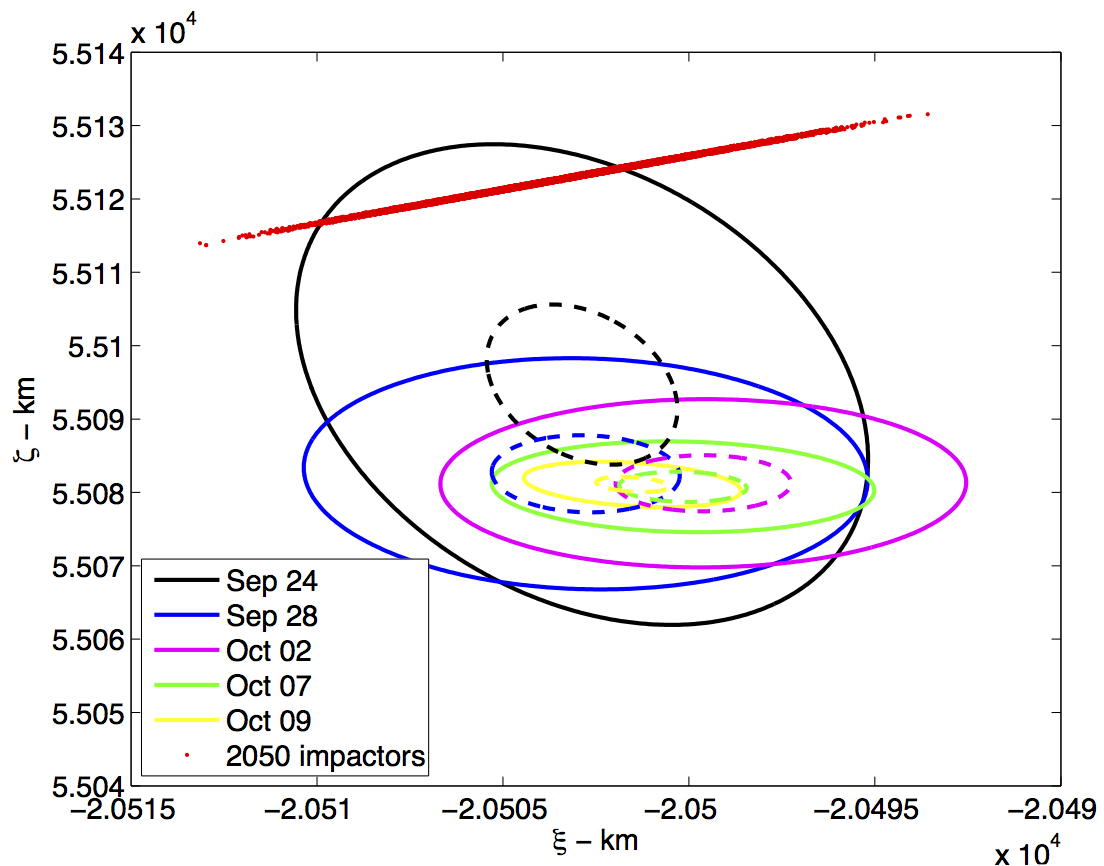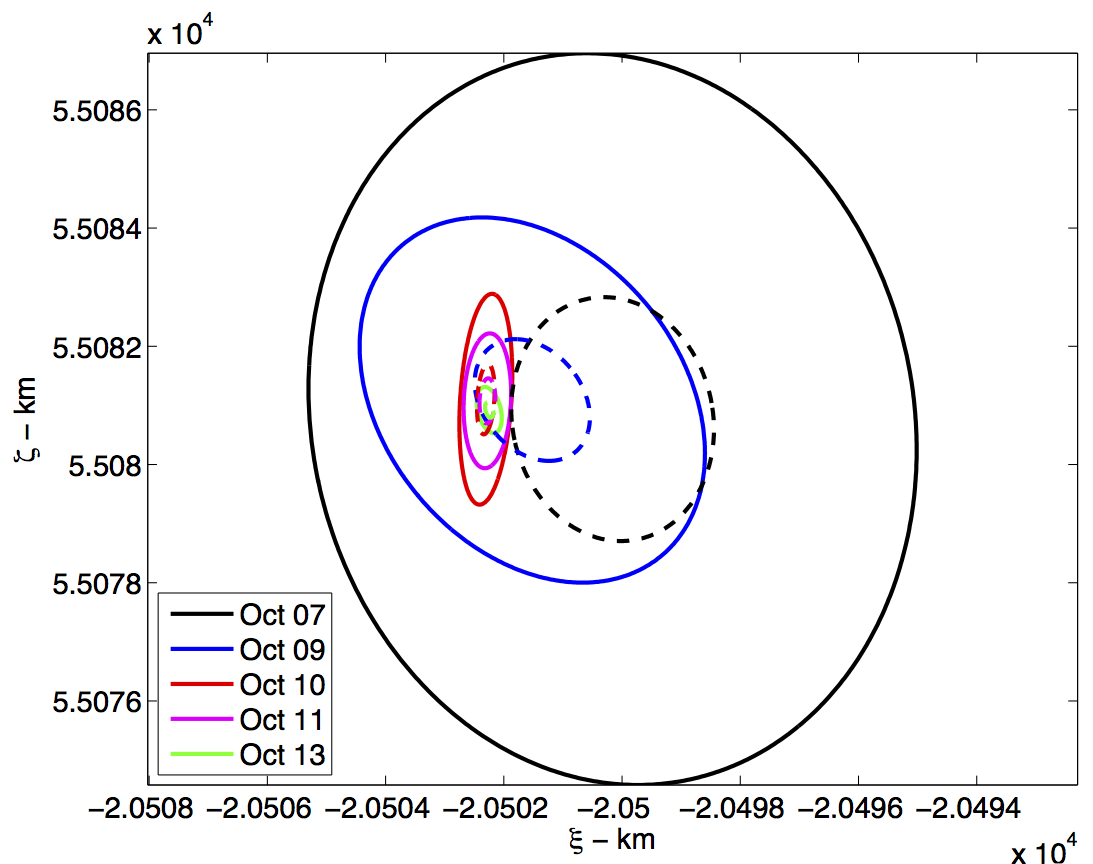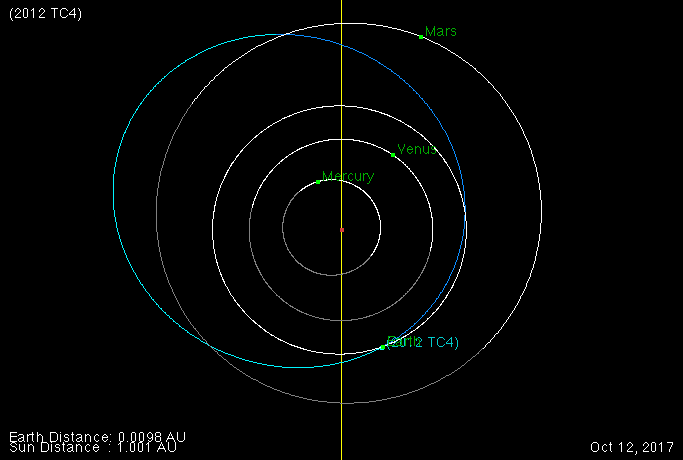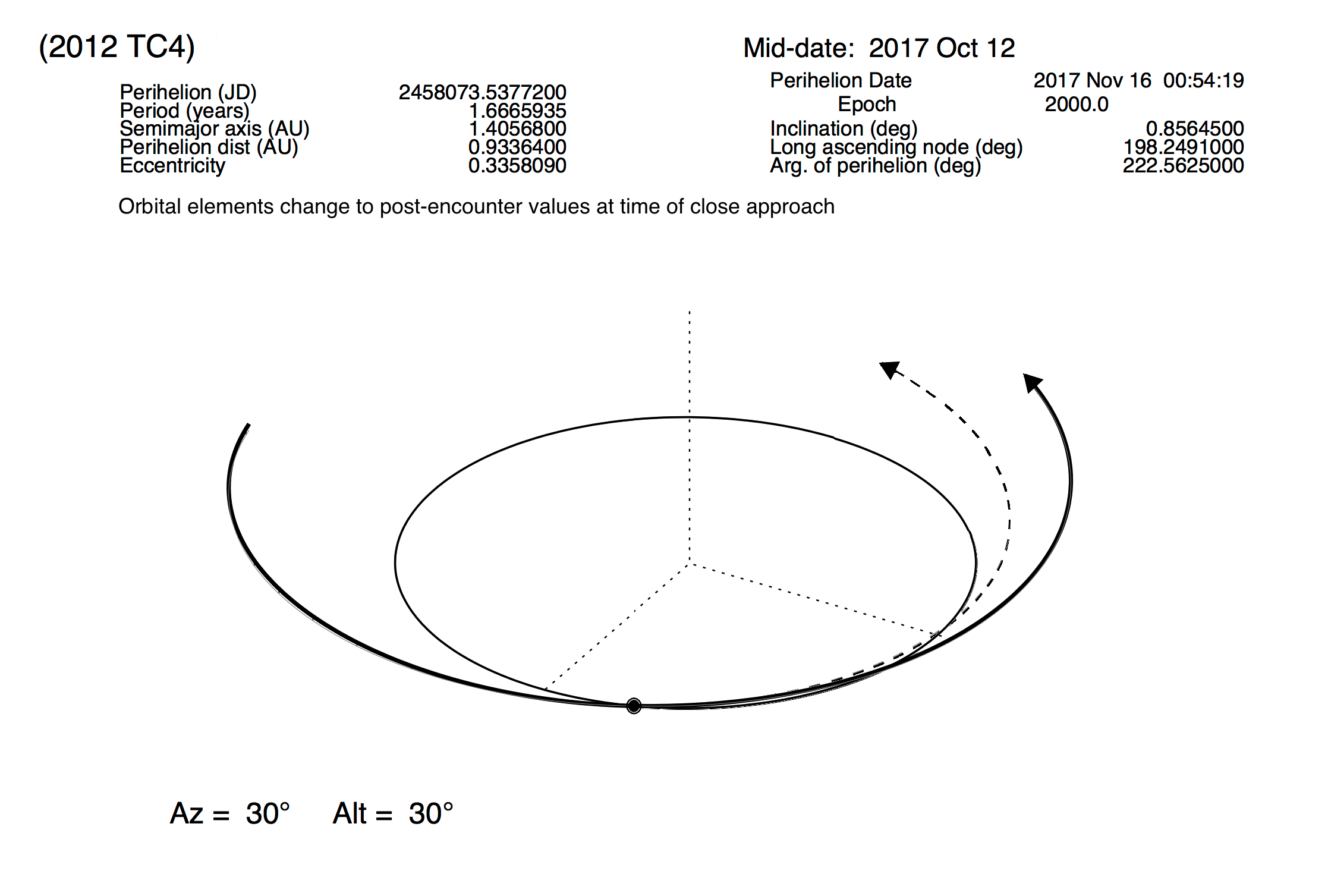Orbit of NEA 2012 TC4
Orbital elements listed here are taken from the JPL Horizons website, and represent the current best solution. The orbit will be perturbed significantly during the close approach to the Earth, so we provide both the Keplerian elements for both the pre- and post-Earth encounter.
Orbital Elements (Solution JPL#56)
| Pre-Earth Encounter | Post-Earth Encounter | |
| Epoch | 2458000.5 (2017-Sep-04.0) | 2458080.5 (2017-Nov-23.0) |
| Perihelion Time | T = 2017-Nov-16.03774024 UT | T = 2017-Nov-03.95623504 UT |
| Perihelion Time (JD) | T = 2458073.53774024 | T = 2458061.45623504 |
| Orbital Period | P = 1.6666 yr | P = 2.0622 yr |
| Semi-major Axis | a = 1.405677 AU | a = 1.620157 AU |
| Perihelion Distance | q = 0.933637 AU | q = 0.965384 AU |
| Eccentricity | e = 0.335810 | e = 0.404142 |
| Inclination (J2000) | i = 0.8565° | i = 0.5361° |
| Ascending Node (J2000) | Ω = 198.2492° | Ω = 198.1455° |
| Argument of Perihelion (J2000) | ω = 222.5626° | ω = 263.9774° |
| Perigee Time | t = Oct 12, 2017 05:40:50.475±0.017s UT |
|
| Perigee Distance | Δ = 50,151.40 ± 0.39 km | |
| Velocity with respect to Earth at closest approach |
V = 7.65 km/s | |
| Min. Orbital Intersection Dist. | MOID = 0.00012 AU | |
| Impact probability at Earth in 2050 |
0 |
Orbit Solution Precludes any impact with Earth for over 100 years
Orbit solution JPL#56, which included radar astrometry and close encounter optical data, has ruled out any impact with the Earth in the next 100 years. As of 16 Oct 2017, 2012 TC4 has been removed from the Sentry: Impact Monitoring List.
Orbit Solution Precludes 2050 Impact with Earth
Starting with orbit JPL#46, it became clear that 2012 TC4 would miss the keyhole that would lead to an impact with Earth in 2050. This plot shows the b-plane—the asymptotic location of TC4 relative to the Earth before the Earth's gravity starts bending the trajectory of TC4. The b-plane intersections for progressive orbit solutions is shown by the ellipses (dashed lines show 1-σ uncertainties, solid lines show 3-σ uncertainties), while the red dots show the b-plane coordinates that lead to an impact in 2050. Starting with the Sept 28 solution, the 3-σ uncertainties fall well clear of the red dots, indicating that the asteroid will miss the Earth in 2050. Future impacts beyond that date have not been ruled out.

Updated for the most current orbit (Note colors and scales have changed from above).

Full Orbit From Above
View of 2012 TC4's pre-encounter orbit as seen from the North ecliptic pole with the asteroid and planets shown at the time of the asteroid's closest approach to Earth. From the JPL Small-Body Database Browser.

Orbit in Oblique View
Oblique view of the portion of 2012 TC4's orbit around perigee, viewed from 30° above the ecliptic plane. The black dot denotes the asteroid's and Earth's positions at perigee (12 Oct 2017). The solid arrow shows the pre- and post-Earth encounter trajectories, while the dashed arrow shows the post-encounter keplerian trajectory that would have resulted if the Earth's gravity did not alter the asteroid's orbit. The asteroid's orbit lies within a degree of the ecliptic plane. 
PDF Version